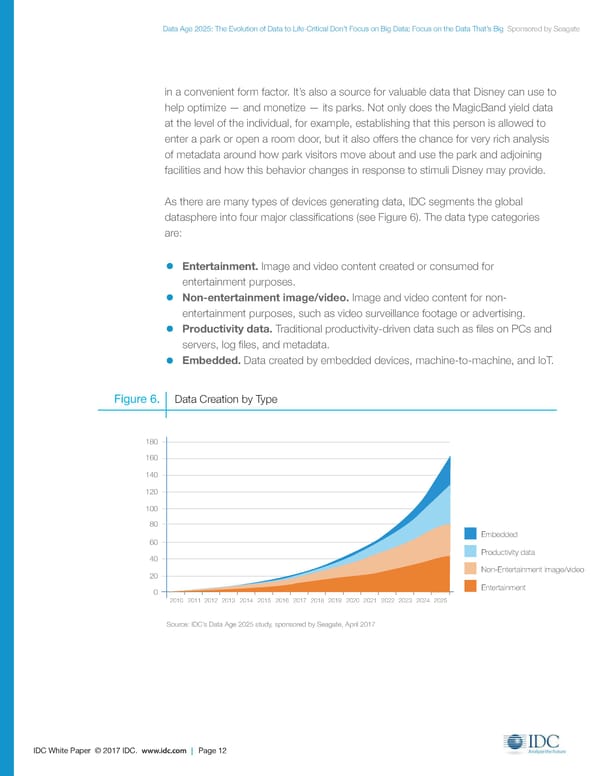Data Age 2025: The Evolution of Data to Life-Critical Don’t Focus on Big Data; Focus on the Data That’s Big Sponsored by Seagate in a convenient form factor. It’s also a source for valuable data that Disney can use to help optimize — and monetize — its parks. Not only does the MagicBand yield data at the level of the individual, for example, establishing that this person is allowed to enter a park or open a room door, but it also offers the chance for very rich analysis of metadata around how park visitors move about and use the park and adjoining facilities and how this behavior changes in response to stimuli Disney may provide. As there are many types of devices generating data, IDC segments the global datasphere into four major classifications (see Figure 6). The data type categories are: • Entertainment. Image and video content created or consumed for entertainment purposes. • Non-entertainment image/video. Image and video content for non- entertainment purposes, such as video surveillance footage or advertising. • Productivity data. Traditional productivity-driven data such as files on PCs and servers, log files, and metadata. • Embedded. Data created by embedded devices, machine-to-machine, and IoT. Figure 6. Data Creation by Type 180 160 140 120 100 80 Embedded 60 40 Productivity data 20 Non-Entertainment image/video 0 Entertainment 2010 2011 2012 2013 2014 2015 2016 2017 2018 2019 2020 2021 2022 2023 2024 2025 Source: IDC’s Data Age 2025 study, sponsored by Seagate, April 2017 IDC White Paper © 2017 IDC. www.idc.com | Page 12
 Data Age 2025: The Evolution of Data to Life-Critical Page 11 Page 13
Data Age 2025: The Evolution of Data to Life-Critical Page 11 Page 13